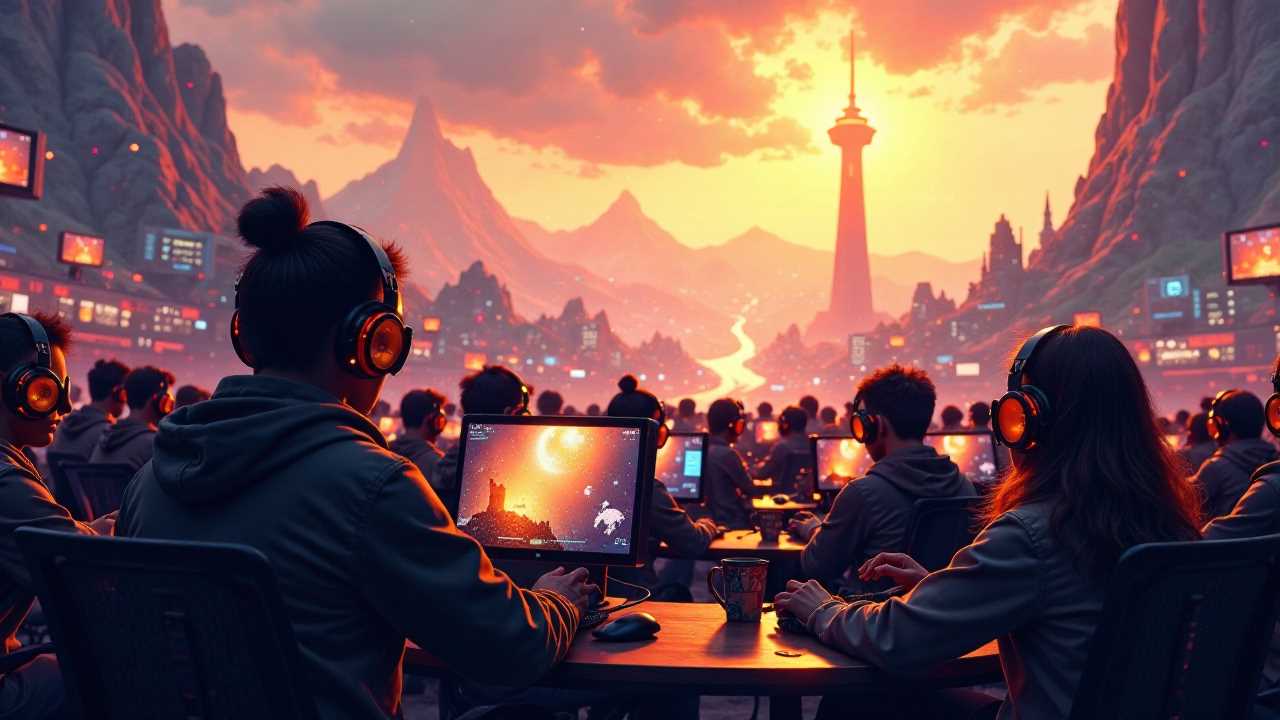
Understanding Virtual Reality Gaming Trends
The landscape of virtual reality gaming is undergoing a significant transformation, driven by technological advancements and changing consumer preferences. As we analyze the current virtual reality gaming trends, it becomes evident that the future is leaning towards more immersive experiences, enhanced social interaction, and a growing emphasis on user-generated content. This article will explore these trends in detail, providing insights into how they shape the gaming industry.
The Rise of Immersive Experiences
Immersive experiences are at the forefront of virtual reality gaming. Gamers are no longer satisfied with simple graphics and linear gameplay; they seek environments that feel real and engaging. The latest VR headsets offer high-resolution displays and advanced motion tracking, allowing players to feel as if they are truly part of the game world. This level of immersion is achieved through a combination of hardware advancements and innovative game design.
Developers are focusing on creating rich narratives and interactive environments that respond to player actions. For instance, games like "Half-Life: Alyx" have set a new standard for immersion, utilizing physics-based interactions and detailed environments. As the technology continues to evolve, we can expect even more sophisticated experiences that blur the lines between reality and the virtual world.
Enhancing Social Interaction in Gaming
Another significant trend in virtual reality gaming is the enhancement of social interaction. Traditionally, gaming has been a solitary activity, but VR is changing that narrative. Multiplayer VR games allow players to connect in shared virtual spaces, fostering a sense of community and collaboration. Titles like "Rec Room" and "VRChat" exemplify this shift, offering platforms where users can socialize, create, and play together.
The integration of social features into VR games is crucial for maintaining player engagement. Developers are increasingly incorporating voice chat, customizable avatars, and social hubs where players can meet and interact. This trend not only enhances the gaming experience but also encourages players to form lasting friendships and communities within the virtual realm.
Cross-Platform Compatibility: Bridging the Gap
As the demand for cross-platform compatibility grows, developers are recognizing the importance of allowing players to connect regardless of their device. This trend is essential for expanding the player base and ensuring that friends can enjoy games together, even if they own different VR systems. Games that support cross-platform play, such as "Beat Saber" and "No Man's Sky," are paving the way for a more inclusive gaming environment.
The push for cross-platform compatibility is driven by the desire for a unified gaming experience. Players want to interact with their friends without being limited by hardware restrictions. As technology improves, we anticipate more titles adopting this approach, making it easier for gamers to connect and share experiences.
Advancements in Hardware: A Game Changer
Hardware advancements play a critical role in shaping the future of virtual reality gaming. The introduction of lighter, more comfortable headsets with improved tracking capabilities has made VR more accessible to a broader audience. Companies like Oculus, HTC, and Valve are continuously innovating, releasing devices that offer enhanced performance and user experience.
The development of standalone VR headsets, such as the Oculus Quest series, has also contributed to the growth of the market. These devices eliminate the need for a powerful gaming PC, allowing users to enjoy VR experiences without the associated costs. As hardware continues to improve, we can expect more gamers to embrace virtual reality, further driving the industry's expansion.
User-Generated Content: Empowering Creativity
The trend of user-generated content is reshaping the way games are developed and experienced. Platforms that allow players to create and share their own content are gaining popularity, providing a space for creativity and innovation. Games like "Minecraft" and "Roblox" have demonstrated the potential of user-generated content, enabling players to build their own worlds and experiences.
In the realm of virtual reality, user-generated content is becoming increasingly important. Developers are recognizing the value of empowering players to contribute to the game world. This not only enhances replayability but also fosters a sense of ownership among players. As more tools and platforms become available for creating VR content, we can expect a surge in unique and diverse experiences.
The Shift Towards Subscription Models
The gaming industry is witnessing a shift towards subscription models, providing players with access to a wide range of games for a monthly fee. Services like Oculus Quest's App Lab and PlayStation Plus are leading the charge, offering subscribers a curated selection of VR titles. This model allows players to explore new games without the commitment of purchasing each title individually.
Subscription models are appealing to gamers who want to experience a variety of content without breaking the bank. As the market continues to evolve, we anticipate more developers adopting this approach, creating a sustainable ecosystem for both players and creators.
The future of virtual reality gaming is bright, with trends pointing towards more immersive experiences, enhanced social interaction, and a focus on user-generated content. As hardware advancements continue to improve, and cross-platform compatibility becomes the norm, the gaming landscape will transform into a more inclusive and engaging environment. The rise of subscription models further supports this evolution, making VR accessible to a wider audience.
As we move forward, it is clear that these trends will shape the next generation of gaming, creating experiences that are not only entertaining but also deeply connected to the players who inhabit them. The world of virtual reality gaming is on the brink of a new era, and we are excited to see where it leads.
 SportsHollywoodLifestyleFashionHome & GardenTrendsPrivacy PolicyTerms And Conditions
SportsHollywoodLifestyleFashionHome & GardenTrendsPrivacy PolicyTerms And Conditions
